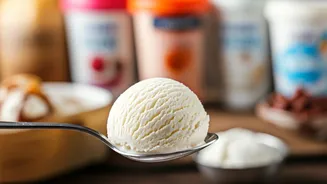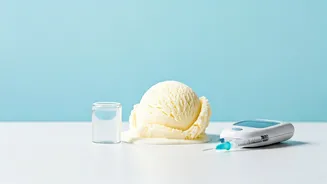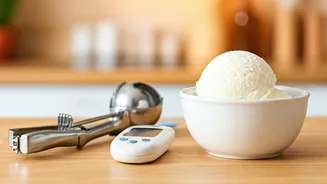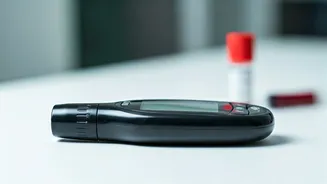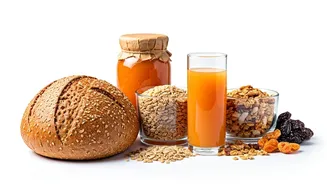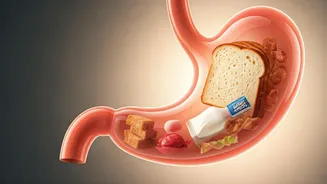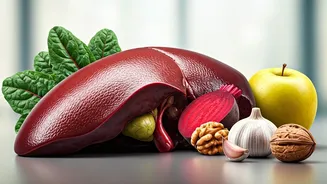Understanding the Impact
Ice cream, unfortunately, can present challenges for individuals managing diabetes. The primary concern arises from its sugar and carbohydrate content,
which directly influences blood glucose levels. When you consume ice cream, your body breaks down these carbohydrates into glucose, causing blood sugar to rise. Furthermore, ice cream often contains saturated fats, which, although not directly impacting blood sugar, can still impact overall health, particularly cardiovascular health, a frequent concern for those with diabetes. Understanding these basic principles is the first step toward making informed choices and enjoying ice cream responsibly as part of a balanced diet.
Decoding Ice Cream Labels
Navigating the ice cream aisle requires careful attention to nutrition labels. The crucial elements to examine are the serving size, total carbohydrates, added sugars, and fat content. Pay close attention to the serving size; the values listed on the label relate to that specific amount. Check the total carbohydrates, as these will impact your blood sugar. It's essential to watch the added sugars, which elevate blood sugar levels more quickly than natural sugars. Also, be mindful of the fat content, especially saturated fats, and how they contribute to overall health. Comparing different products based on these factors is the key to selecting better options and managing blood sugar more effectively.
Prioritizing Healthier Choices
Numerous ice cream alternatives can accommodate diabetes management. Look for options low in sugar, carbohydrates, and fat. Consider sugar-free ice creams, which use sugar substitutes to reduce the sugar impact. Greek yogurt-based ice creams offer a protein boost and can be lower in carbohydrates. Also, sorbets, which are typically fruit-based and dairy-free, can be a lighter choice, but be mindful of their sugar content. When possible, opt for smaller portions, and explore homemade ice cream options, giving you control over ingredients and amounts. Making informed choices contributes to satisfying cravings while managing blood sugar levels.
Portion Control Strategies
Portion control plays a crucial role in enjoying ice cream without causing significant blood sugar spikes. Begin by measuring out your serving size to stay within your recommended carbohydrate allowance. Using a smaller bowl or cone can help visually manage portions. Consider your total daily carbohydrate intake and how ice cream fits into that. Pairing your ice cream with protein and fiber-rich foods can help slow the absorption of sugar. For instance, have a small serving with some nuts or a side of fruit. By being mindful of your serving sizes and how they fit within your meal plan, you can enjoy ice cream without compromising your blood sugar control.
Timing Your Treats
The timing of when you eat ice cream can also influence its impact on your blood sugar. Eating ice cream alongside a meal, especially one containing protein, fiber, and healthy fats, can help mitigate the blood sugar spike, because these other components slow down the digestion of sugar. Avoid consuming ice cream on an empty stomach, as this can lead to a more rapid glucose increase. Monitor your blood sugar levels before and after eating ice cream to understand how it affects you personally. Adjusting the timing of your ice cream consumption, in conjunction with other dietary adjustments, can help you manage your blood sugar levels.
Incorporating Exercise
Physical activity can play a helpful role in managing blood sugar after eating ice cream. Exercise helps increase insulin sensitivity, which makes your body more effective at using glucose. Taking a brisk walk after enjoying ice cream can help lower your blood sugar levels. Keep in mind, however, that the effectiveness of exercise can vary depending on individual factors, so it is recommended to monitor blood sugar levels regularly, and to consult with a healthcare professional before adjusting your exercise routine.
Monitoring Blood Sugar
Regularly monitoring your blood sugar levels before and after consuming ice cream is a crucial practice. This process helps you understand how different types and amounts of ice cream influence your blood glucose levels. Keep a food diary, recording the type of ice cream, the portion size, the timing, and your blood sugar readings. This information can help you identify patterns and make informed decisions about your ice cream consumption. Discuss your findings with your healthcare provider or a certified diabetes educator to refine your eating plan and make sure you’re appropriately managing your blood sugar.
